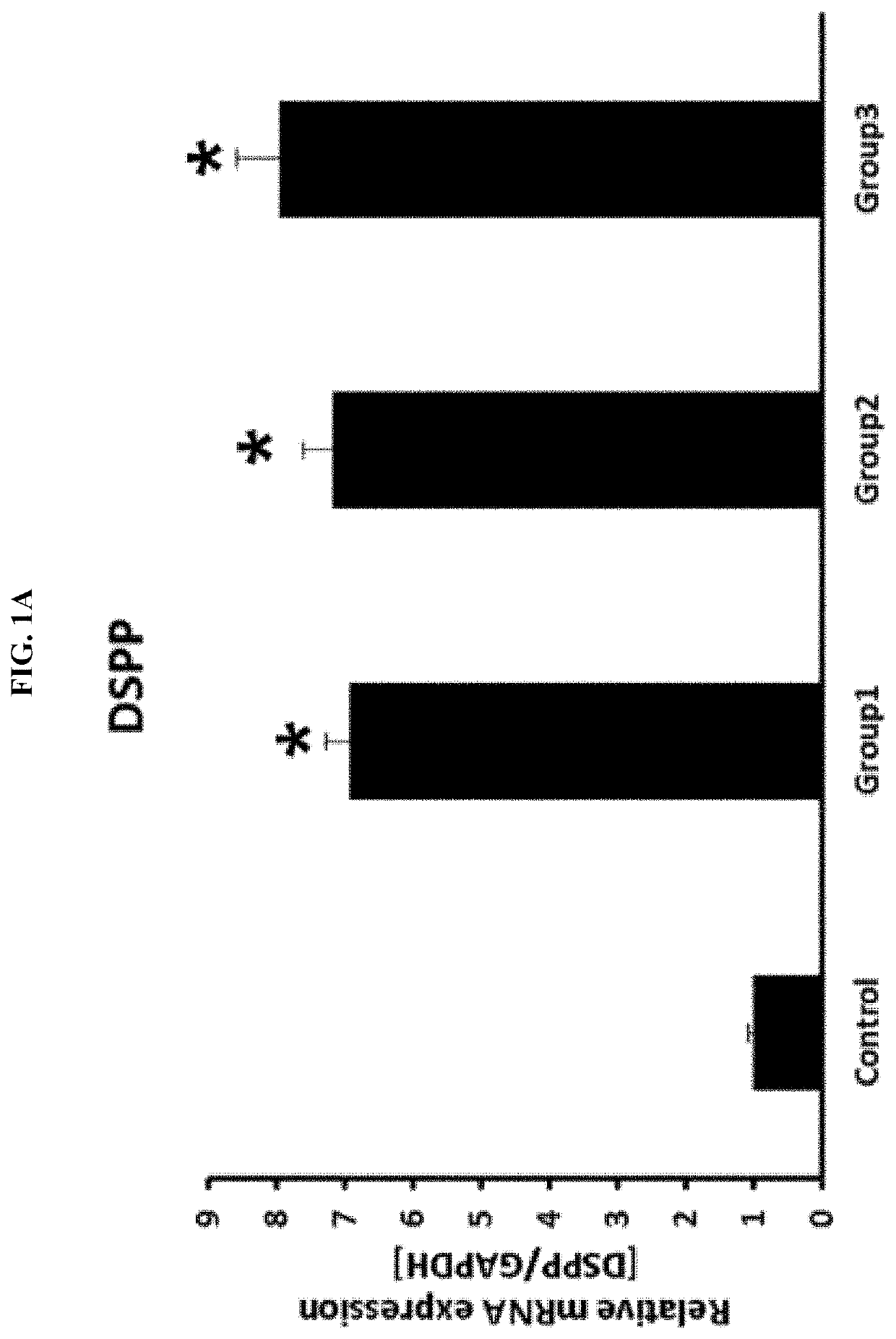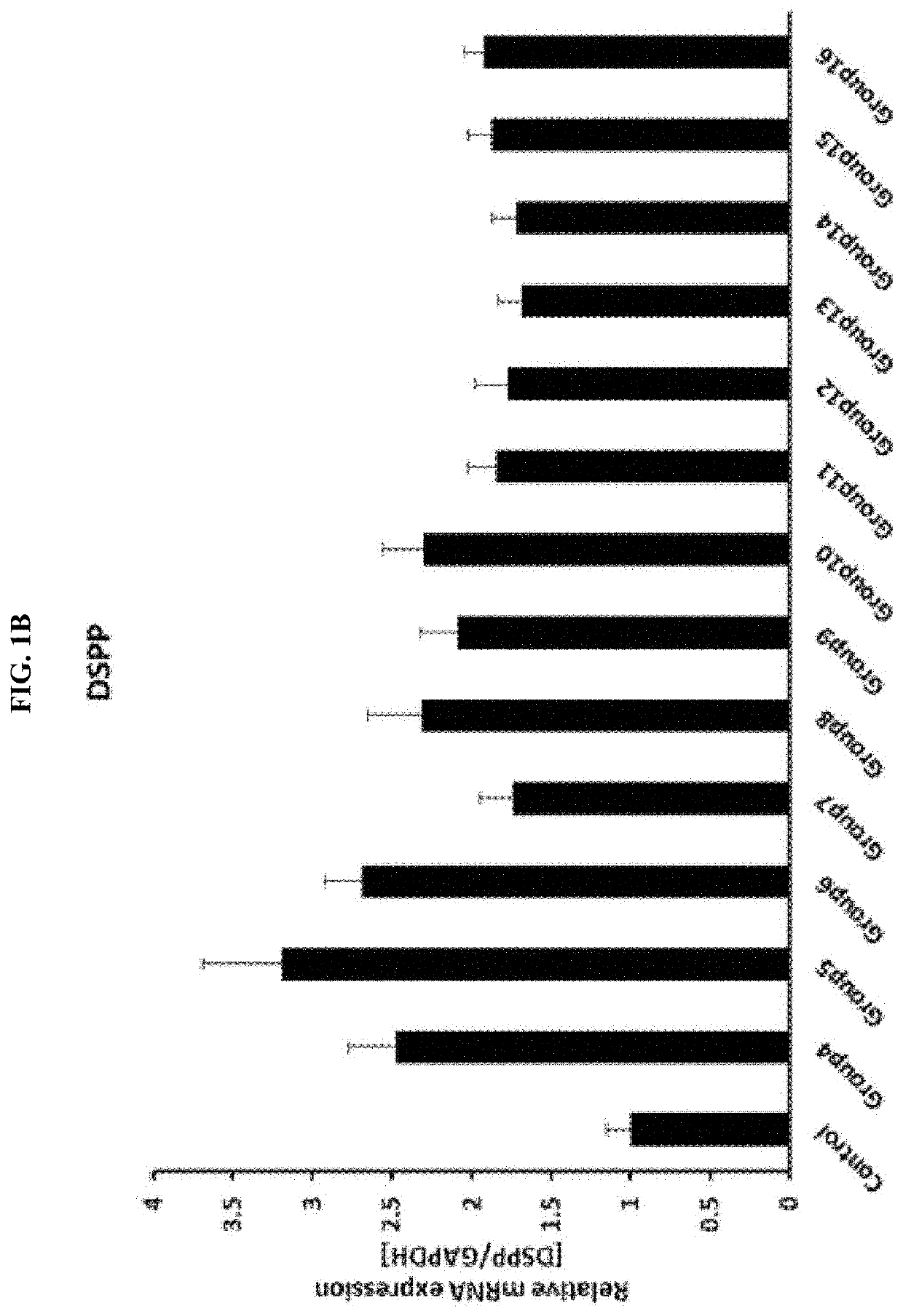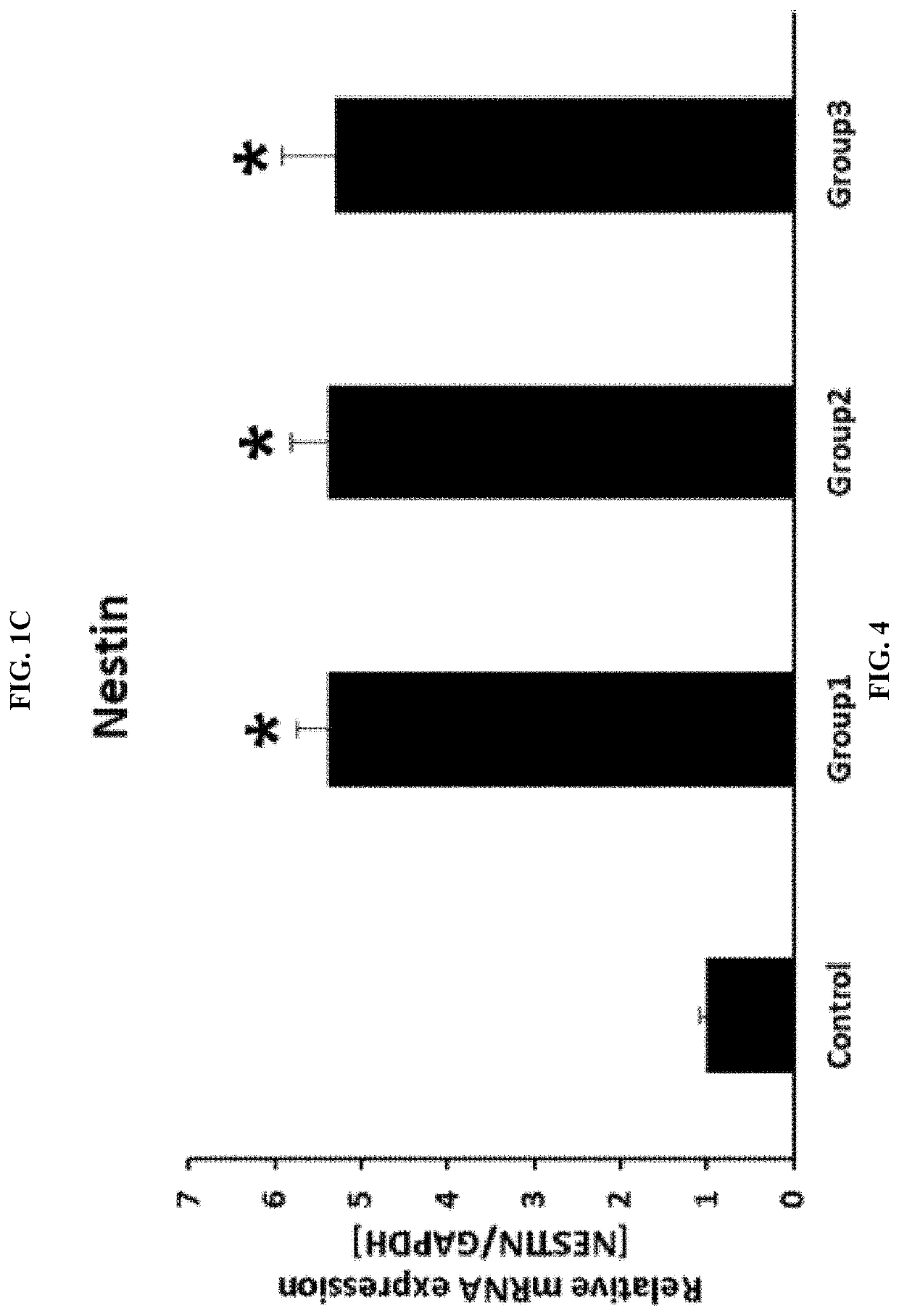Novel peptide
a peptide and peptide technology, applied in the field of peptides, can solve the problems of loss of entire pulp tissue, periapical diseases or disorders of the entire tooth, and disease of the entire tooth, and achieve the effect of promoting regeneration of hard tissue and/or pulp tissues and excellent effects
- Summary
- Abstract
- Description
- Claims
- Application Information
AI Technical Summary
Benefits of technology
Problems solved by technology
Method used
Image
Examples
example 1
Methods and Materials
[0131]Synthesis of peptides for promoting generation of hard tissue including dentin, bone and cementum and / or dental pulp and in treating dentin-dental pulp diseases and / or periodontal diseases
[0132]The present inventors synthesized a peptide (SEQ ID NO: 1) showing the effect of promoting regeneration of hard tissue including dentin, bone and cementum and / or dental pulp tissue by a 9-fluorenylmethyloxycarbonyl (Fmoc) method, and they synthesized peptides of Representative groups (Tables 1 to 16) by substituting the amino acids of the synthesized peptide.
(SEQ ID NO: 1)N-KYQRRKK-C
[0133]First, peptides of Group 1 were synthesized by using the peptide of SEQ ID NO: 1 or by substituting any amino acid at positions 5 to 7 of the peptide of SEQ ID NO: 1 with lysine or arginine (Table 1).
TABLE 1 Peptides of Group 1SEQ ID NO:Amino acid sequence (N-C)1KYQRRKK2KYQRRKR3KYQRRRK4KYQRRRR5KYQRKKK6KYQRKRK7KYQRKKR8KYQRKRR
[0134]Next, peptides of Group 2 were synthesized by substi...
example 1-2
Cell Culture
[0150]Cells were cultured in humidified air containing about 37% of CO2 at 37 ° C. Moreover, they were used in the experiment. Human bone marrow mesenchymal stem cells (hBMSCs) were purchased and used from Lonza (LONZA, Switzerland). hBMSCs were cultured in an alpha-MEM(a-MEM) (Invitrogen) culture medium containing 10% heat-inactivated bovine serum.
example 1-3
Separation and Culture of Human-Derived Dental Pulp Cells
[0151]Human dental pulp cells were separated from wisdom teeth of adults (aged 18-22) at the School of Dentistry, Seoul National University. In detail, all experiments were performed after the approval of the Institutional Review Board and the informed consent from patients. Wisdom teeth were fractured according to a method of Jung HS et al. (J Mol Histol.(2011)) to expose the dental pulps, and dental pulp tissues were separated with forceps. Each of the separated dental pulp tissues was cut into small pieces with a razor blade, put in a 60-mm dish, covered with a coverslip, and then cultured in a Dulbecco's modified Eagle's medium. It has been known that human dental pulp cells can differentiate into odontoblast, osteoblast, cementoblast, and periodontal ligament cells under various conditions (Tissue Eng Part A. 2014 Apr; 20 (7-8): 1342-51).
PUM
 Login to View More
Login to View More Abstract
Description
Claims
Application Information
 Login to View More
Login to View More - R&D
- Intellectual Property
- Life Sciences
- Materials
- Tech Scout
- Unparalleled Data Quality
- Higher Quality Content
- 60% Fewer Hallucinations
Browse by: Latest US Patents, China's latest patents, Technical Efficacy Thesaurus, Application Domain, Technology Topic, Popular Technical Reports.
© 2025 PatSnap. All rights reserved.Legal|Privacy policy|Modern Slavery Act Transparency Statement|Sitemap|About US| Contact US: help@patsnap.com



